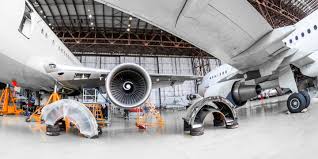Recycling plays a vital role in aviation sustainability, helping to reduce the environmental impact of air travel. By focusing on material reuse, waste reduction, and resource conservation, the aviation industry is working toward more environmentally responsible operations. Below are key aspects of recycling in aviation sustainability:
Recycling of Aluminum:
- Aluminum makes up a significant portion of an aircraft’s structure.
- Recycling aluminum requires less energy than producing new aluminum, reducing carbon emissions.
- Aluminum can be recycled indefinitely without losing quality.
Aircraft End-of-Life (EOL) Recycling:
- At the end of an aircraft’s operational life, it is dismantled for recycling.
- Valuable materials like metals, plastics, and electronics are recovered and reused.
- The recycling process reduces waste sent to landfills and supports the circular economy.
Recycling Programs at Airports:
- Airports implement recycling programs for paper, plastics, and food waste generated during operations.
- Waste reduction efforts help minimize the environmental footprint of airport operations.
Sustainability Practices by Airlines:
- Airlines focus on reducing single-use plastics on flights and within airports.
- Recycling is encouraged during flights, and efforts are made to increase waste diversion from landfills.
In conclusion, recycling is an essential aspect of aviation sustainability, reducing waste, conserving resources, and lowering carbon emissions. Through the recycling of materials like aluminum and the responsible decommissioning of aircraft, the aviation industry is taking significant steps toward environmental responsibility and sustainability.
